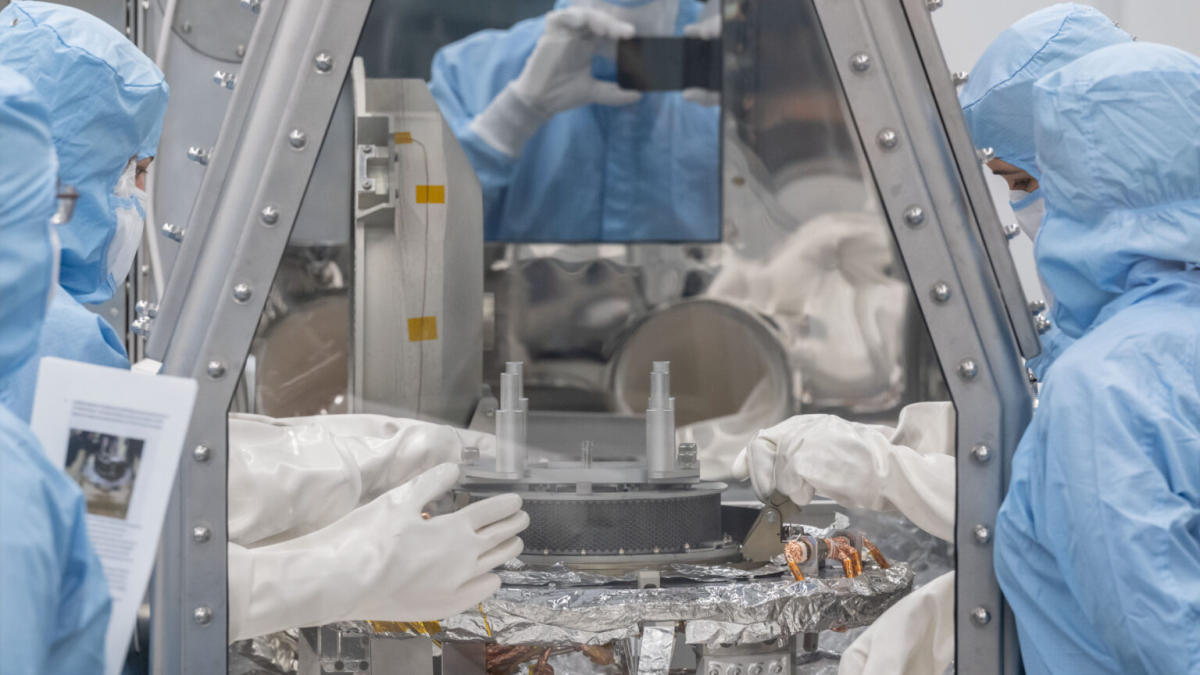NASA’s Historic Sample Return Mission: OSIRIS-REx Capsule Contains Bennu Asteroid Material
On September 24, NASA achieved a major milestone as an orange-and-white capsule carrying fragments of the Bennu asteroid touched down on Earth after a rapid descent through the atmosphere. Bennu, a celestial body present since the early days of our solar system, holds the potential to unveil secrets about the origin and evolution of our cosmic neighborhood.
Launched in 2016 as part of the OSIRIS-REx mission, the capsule traveled an astonishing 4 billion miles within a spacecraft to reach Bennu. Once it reached the asteroid’s surface, the spacecraft extended an arm and briefly made contact with the rock to collect a small sample of its material.
Scientists had hoped to retrieve at least 60 grams of Bennu’s material, but much to their astonishment, the OSIRIS-REx team announced on October 23 that they had successfully collected far more than expected.
According to a NASA blog post, the curation team has already removed and collected 70.3 grams (2.48 ounces) of Bennu material from the capsule, despite not having opened it yet. These samples were obtained from the outer surface and part of the interior of the sample collector’s head.
Intriguingly, the post reveals that additional material still remains inside the sampler head, called the Touch-and-Go Sample Acquisition Mechanism (TAGSAM), which will be removed later, further contributing to the total mass of the retrieved samples.
While OSIRIS-REx is not the first asteroid-sample-return mission, it has delivered the largest-ever asteroid sample to Earth, surpassing JAXA’s Hayabusa mission in terms of volume.
NASA plans to distribute the Bennu samples to various research institutions, allocating 25% to over 200 scientists at 25 different facilities, 4% to the Canadian Space Agency, and 0.5% to JAXA, who received approximately 10% of the Hayabusa 1 asteroid payload in the past. The remaining samples, approximately 70%, will be stored at the Johnson Space Center for extensive study, much like the enduring investigations conducted on Apollo moon rock samples.
The bulk of the sample within the capsule can be attributed to the touch-and-go approach employed during sample collection. Scientists were surprised to discover that Bennu was not a solid object but rather a malleable one. When the sample collection arm made contact with the rock, clouds of dust particles were released into the air, creating a dramatic scene that nearly engulfed the spacecraft.
As a result, the exact amount of sample inside the OSIRIS-REx capsule remains uncertain until it is opened. However, opening the container presents a new challenge. The team is currently working on devising a plan for this task, which has proven to be slightly difficult, as indicated by the blog post.
The OSIRIS-REx mission adheres to strict regulations to ensure the preservation of the sample’s integrity. For instance, all curation work is carried out inside a special glove box with a constant flow of nitrogen to prevent exposure to Earth’s atmosphere.
While preparations are underway to access the final portion of the material, the TAGSAM head has been removed from the active nitrogen flow within the glove box. It is now stored in a transfer container, secured by an O-ring and sealed in a Teflon bag to maintain a stable, nitrogen-rich environment that safeguards the sample.


